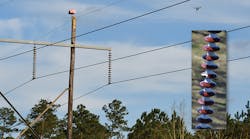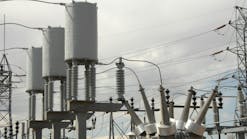Flying High: Drones Find Many Applications in the Electric Power Industry
Industry Challenge
Unmanned aircraft systems (UAS) are no longer the new technology — utilities continue to find innovative uses for drones at multiple business units. Compared to traditional methods, the most valuable applications for UAS offer appealing advantages in safety, speed, cost, and quality. Looking ahead, potential disruptions in regulations and technology could translate into even more value that utilities can gain from the technology. One of the most potentially impactful regulatory changes is commercial entities’ ability to operate UAS beyond visual line of sight (BVLOS) through waivers from the Federal Aviation Administration. As the UAS industry evolves, utilities need objective, science-based information to help apply the technology in the most valuable way.
EPRI’s Response
The Electric Power Research Institute has researched key UAS topics in depth, including electrical effects, BVLOS operations, automated inspections, cost-benefit analysis, advanced payloads, indoor operations, and storm response. EPRI has built a dedicated UAS high-voltage test facility at its laboratory in Lenox, Massachusetts. This site validates the performance of UAS under steady-state and transient electric and magnetic fields.
EPRI expects a future state where utilities use UAS in an automated way — supplanting or supplementing some of utilities’ manual processes — to support the next generation of inspections and assessments. There are many steps to enable automation:
- Flight path planning
- Flight execution
- Collection of images and other sensor-generated data
- Data management
- Data analysis and decision support
Progress, Results & Next Steps
A few of the findings from EPRI’s research are as follows:
- UAS can be affected by electric and magnetic fields, making it critical for different designs to be verified prior to operation in high-voltage environments.
- Applications requiring the UAS to bond to energized conductors are challenging; this topic requires more research.
- Current regulations allow UAS to be operated BVLOS. However, practical flight distances are often constrained by the strength of communication links and flight time.
- LiDAR models can be used to build UAS flight plans. Furthermore, with the appropriate buffer zones, these flight plans can be executed safely on full-size energized transmission structures.
- Many UAS come with integrated or modular digital camera systems. However, UAS can carry other payloads as well as perform lifting applications.
- UAS can be flown at night to accelerate storm damage assessment.
It appears that the technology is mature and capable of handling many utility applications. The biggest technical limitations are related to autonomous "detect-and-avoid" navigation, communication range, flight time of battery-powered systems, and automated data collection and analysis. For the power industry, there is much work to be done to convert existing manual processes into automated inspection solutions and to fully leverage the opportunities presented by drones.
How to Use the Research
This research helps utilities realize the full potential of UAS technology by offering alternative solutions to traditional utility processes. It provides a solid technical basis for utilities to make informed decisions and apply UAS solutions. Additionally, EPRI’s UAS research quantifies the impact to the safety, speed, cost, and quality of utility processes.
How to Get Involved
Utilities and technology providers can engage with EPRI by participating in the annual UAS for Electric Utilities Workshop on Nov. 12–13, 2019, in Charlotte, North Carolina. Utilities are also encouraged to participate in EPRI’s three ongoing T&D research projects on UAS. Before deploying any UAS solution in an energized environment, vendors and utilities should consider testing it at EPRI’s high-voltage test facility.


